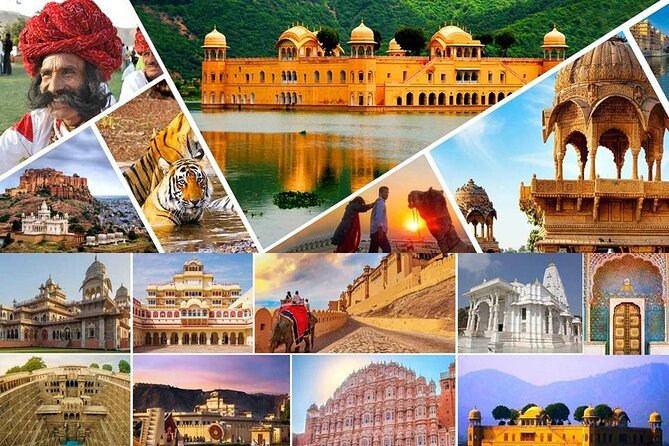Nestled on the eastern fringes of Rajasthan, the Ranthambore National Park is a captivating wilderness where ancient history, thriving wildlife, and vivid landscapes come alive. A journey through this jungle isn’t just a sightseeing experience—it’s an immersive adventure into the heart of India’s wild heritage. One of the most exhilarating ways to explore this rich ecosystem is through a Jeep safari in Ranthambore, which promises an up-close encounter with majestic Bengal tigers, elusive leopards, and vibrant birdlife, all set against the backdrop of rugged cliffs and century-old ruins.
Why Ranthambore Stands Apart for Wildlife Enthusiasts
Ranthambore is not just another national park; it’s a storyteller. Once a royal hunting ground, the park today is one of India’s premier tiger reserves and a magnet for conservationists, nature photographers, and curious travelers. The 392-square-kilometer park lies at the junction of the Aravalli and Vindhya hill ranges, offering diverse topography, from open grasslands to dense forests and picturesque lakes.
The jeep safari experience here is remarkably distinct due to the park’s high tiger density, making it one of the best locations in the world to spot tigers in their natural habitat. The park is divided into multiple zones, each with its unique landscape and wildlife dynamics, which guides and naturalists are expertly trained to navigate. Whether it’s watching a tigress with her cubs at the edge of Padam Lake or observing a crocodile basking in the sun near Rajbagh Ruins, every ride holds the potential for awe-inspiring moments.
Planning Your Jeep Safari in Ranthambore: What to Expect
A Ranthambore jeep safari typically takes place in either a 6-seater open Gypsy or a 20-seater canter, but for a more intimate and flexible experience, the former is preferred. The safari is conducted in two slots—morning and afternoon—and each journey lasts approximately three and a half hours.
Key highlights of the experience include:
- Guided expertise: Accompanied by trained naturalists and licensed drivers who know the behavioral patterns of animals and optimal spotting zones.
- Photography opportunity: Open vehicles provide an unobstructed view of the forest and its inhabitants, making it ideal for photographers.
- Scenic landscapes: From the tranquil Jogi Mahal to the ancient Ranthambore Fort peeking through trees, the terrain adds a historical flavor to the adventure.
It is advisable to book safaris well in advance, especially during peak seasons (October to June), as slots fill quickly. Carry valid photo ID proof and follow forest department regulations to ensure a smooth, respectful wildlife experience.
The Magic of Mornings and Twilight in the Jungle
Every hour in the Ranthambore jungle brings a shift in atmosphere, but the early mornings and late afternoons are particularly magical. During dawn safaris, the forest is hushed, cloaked in mist, and lit by soft golden hues. You may hear the alarm call of a sambar deer or the distant roar of a tiger staking its territory.
Afternoon safaris, on the other hand, reveal the jungle in full light. Birds soar above, langurs swing through branches, and predators begin to stir from their midday slumber. The contrast between these two time slots enriches the experience, offering visitors a fuller picture of the park’s rhythms.
Sustainable Tourism and Local Impact
A key part of understanding the Ranthambore safari experience is recognizing the role it plays in conservation and community development. Ranthambore National Park is a flagship model of sustainable wildlife tourism. The revenue generated from safari bookings supports anti-poaching operations, forest maintenance, and local livelihood initiatives.
Jeep safari permits are regulated to minimize ecological disturbance, and the park authorities continuously update guidelines to ensure responsible tourism. Many guides and drivers hail from neighboring villages, and their firsthand knowledge of the forest—often passed down through generations—adds a layer of authenticity and respect to the experience.
Best Times to Visit Ranthambore for Wildlife Sightings
While Ranthambore remains open from October to June, the best time for sightings, especially tigers, is between March and May. The dry summer heat compels animals to visit water bodies more frequently, increasing the chances of observing them up close.
Bird watchers might prefer winter months when migratory birds like the crested serpent eagle, paradise flycatcher, and painted storks flock to the park. Whether you’re hoping to see a regal predator or a rare bird in flight, timing your visit strategically can make all the difference.
Where to Stay: Embracing Comfort Amidst the Wild
A memorable safari is only as good as the comfort and care you return to. Choosing a reliable and immersive accommodation not only enhances your jungle journey but adds a layer of relaxation and rejuvenation. One such stay option, celebrated by nature lovers and wildlife photographers alike, is the Best Resort in Ranthambore. With its eco-conscious design, experienced staff, and proximity to safari gates, the resort complements the spirit of Ranthambore perfectly.
Guests here often praise the seamless integration of wilderness with comfort—imagine sipping chai as peacocks dance nearby, or falling asleep to the distant calls of the jungle. The resort also offers curated experiences like birding walks, tribal village visits, and campfire storytelling sessions that enrich the overall stay.
Final Thoughts: Why a Ranthambore Jeep Safari Is Unmissable
There’s something incredibly primal about being in a forest where nature dictates the pace and rules. A jeep safari in Ranthambore isn’t just about seeing a tiger; it’s about feeling the pulse of the forest, tuning into its secrets, and returning with stories that last a lifetime.
For those seeking an experience that is adventurous, informative, and deeply moving, Ranthambore delivers on every front. From its well-preserved ecosystems and robust conservation practices to the heartfelt narratives shared by local guides, this is a destination that evokes awe, respect, and a longing to return.




